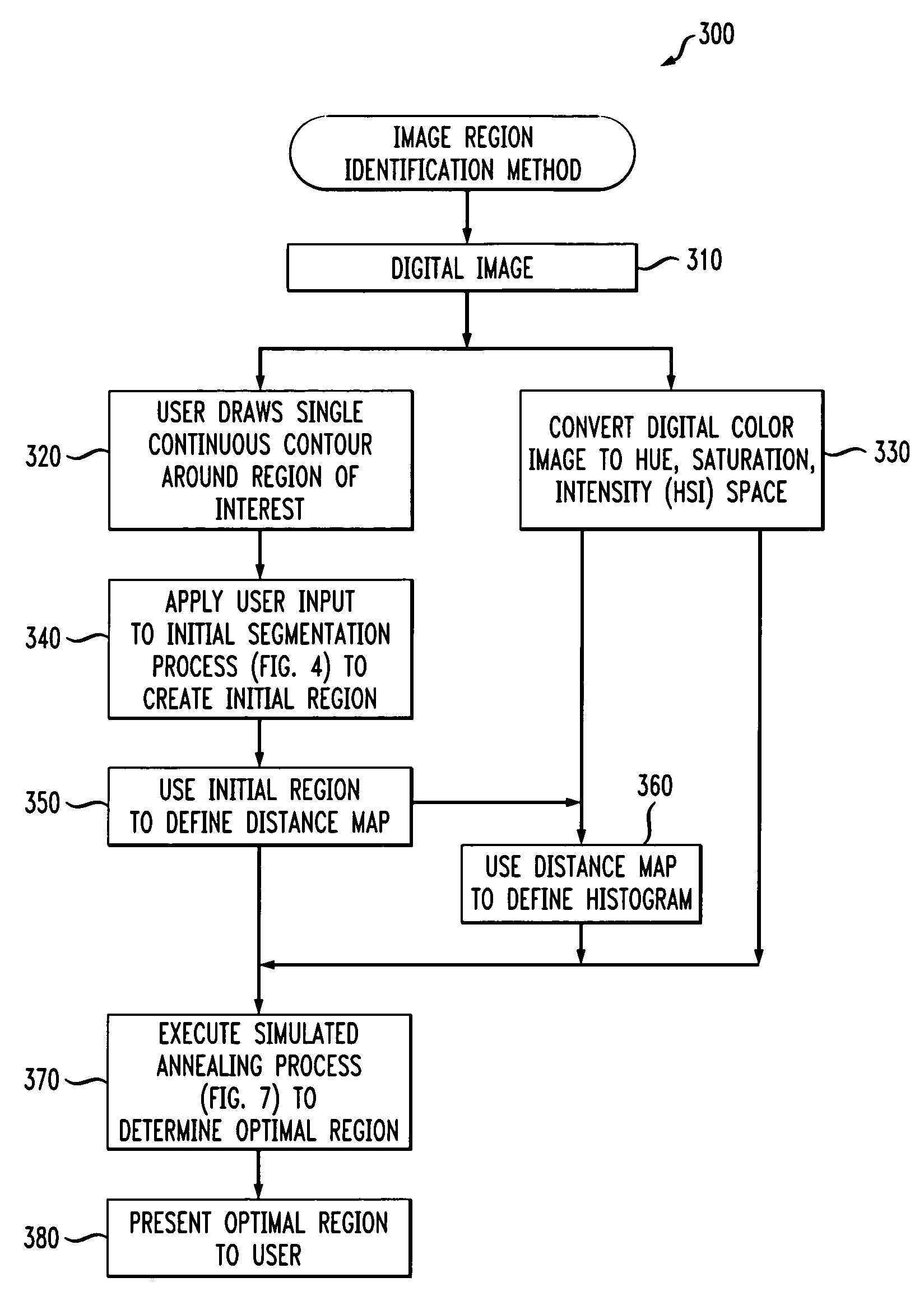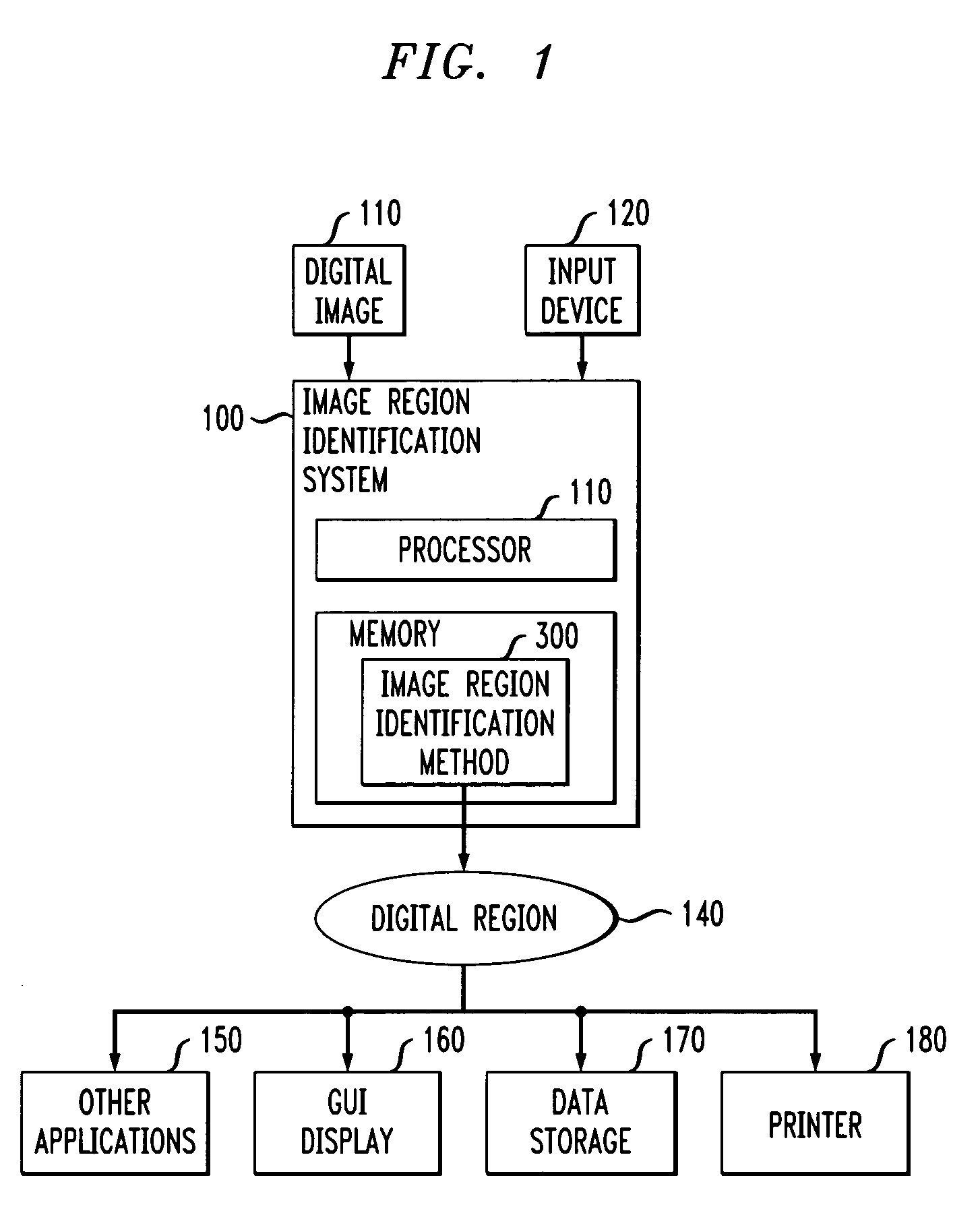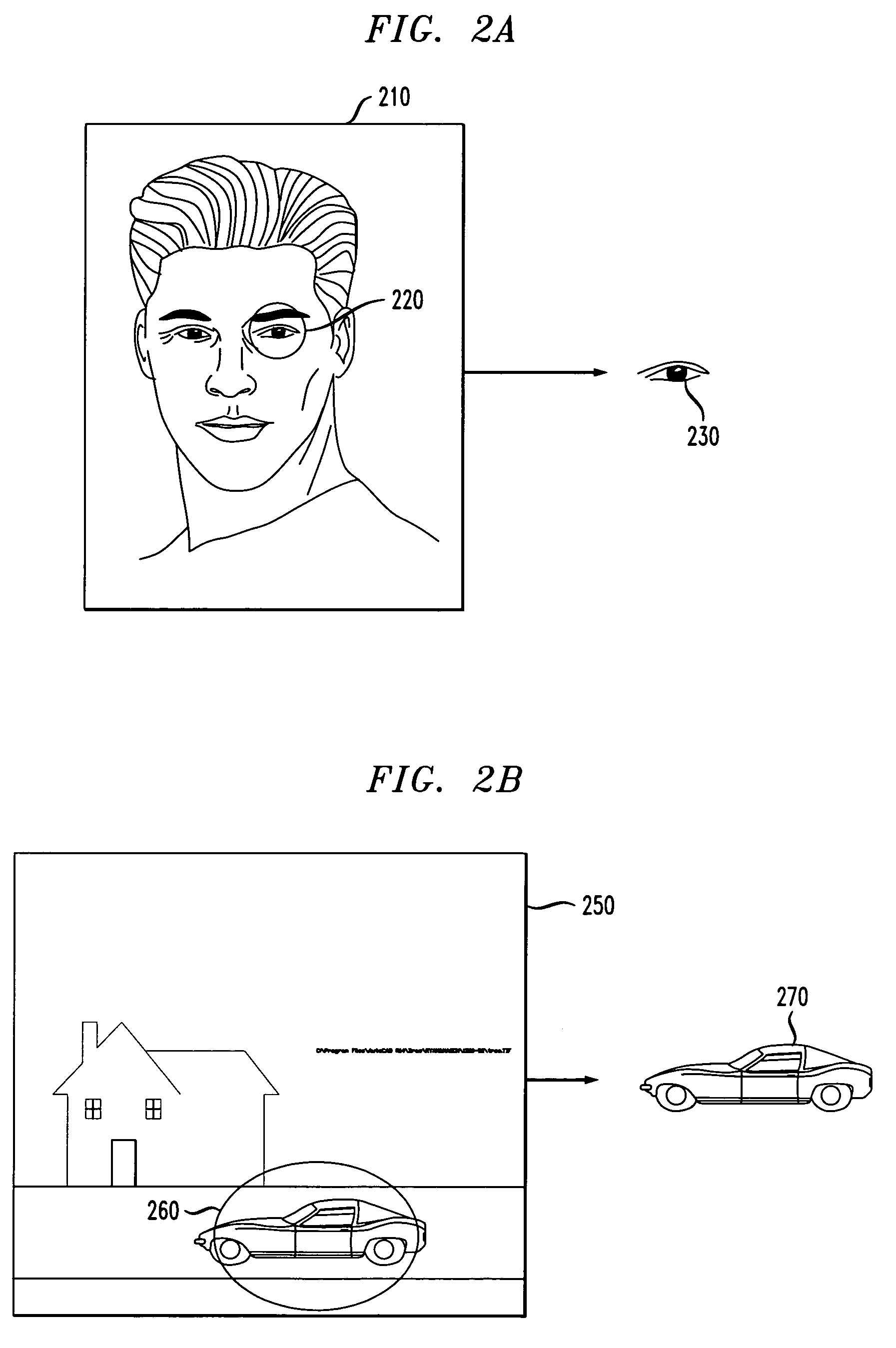Method and apparatus for determining a region in an image based on a user input
a technology of image region and user input, applied in the field of image processing and computer vision, can solve problems such as potential visual complexity, and achieve the effect of accurate segmentation and appropriately measured
- Summary
- Abstract
- Description
- Claims
- Application Information
AI Technical Summary
Benefits of technology
Problems solved by technology
Method used
Image
Examples
Embodiment Construction
[0021]FIG. 1 illustrates an image region identification system 100 in accordance with the present invention. The image region identification system 100 determines a single closed region in an image 110 based on a user input. The user initially draws a contour around the region of interest. The image region identification system 100 uses the user input to create an initial single closed region. Based on the single closed region, the image region identification system 100 computes a distance map, a region-based color histogram and the color gradient of the image 110. This information is combined using simulated annealing to optimally determine the region that (i) is a single connected region whose area is similar to the user input; (ii) has a final boundary relatively near the original boundary (the majority of original pixels are in the final region); (iii) has a final boundary lying along points of high region dissimilarity; (iv) has homogeneous sub-regions that are initially mostly...
PUM
 Login to View More
Login to View More Abstract
Description
Claims
Application Information
 Login to View More
Login to View More - R&D
- Intellectual Property
- Life Sciences
- Materials
- Tech Scout
- Unparalleled Data Quality
- Higher Quality Content
- 60% Fewer Hallucinations
Browse by: Latest US Patents, China's latest patents, Technical Efficacy Thesaurus, Application Domain, Technology Topic, Popular Technical Reports.
© 2025 PatSnap. All rights reserved.Legal|Privacy policy|Modern Slavery Act Transparency Statement|Sitemap|About US| Contact US: help@patsnap.com



